
23.07.2025
5 Steps to Successful AI Integration in Pharmaceutical Marketing
AI is rapidly transforming pharmaceutical marketing, with new tools emerging every day. ChatGPT alone is no longer enough—it’s essential to understand which platforms to use, and for what specific goals. It’s easy to get lost in a sea of technologies, and choosing the right solution often takes longer than expected.
In this guide, we’ve gathered reliable AI tools for data analytics, personalization, creative content generation, and workflow optimization. These are versatile, high-performing platforms our team has tested firsthand—and they truly deliver results in the pharmaceutical industry.
Copywriting
When creating texts for pharmaceutical brands, precision in medical terminology is essential. At the same time, the content must remain engaging and easy to understand. Research shows that doctors are more likely to read articles with clear, insight-driven headlines rather than those that repeat complex medical terms.
Still, turning dry scientific facts into compelling, accessible content is no easy task. AI can significantly streamline the copywriting process: it adapts the style to match the brand’s tone of voice, organizes the information clearly, and automatically adds links to trusted sources.
Tools:
- Text Creation with ToV Adaptation
Copy.ai adjusts the tone to suit the target audience and helps quickly generate content for pharmaceutical brands—from formal scientific articles to light, engaging creatives.
- Medical Texts Translation
DeepL is a useful tool for working with foreign sources. It delivers highly accurate translations, taking both context and specialized medical terminology into account.
- Text Structuring
AI platforms help break down content into meaningful sections and improve readability. Grammarly not only checks grammar but also suggests ways to enhance structure and logic. Notion AI splits complex, lengthy materials into clearly structured, easy-to-read content blocks.
- Fact-Checking and Source Linking
When creating content for pharmaceutical brands, it’s critically important to reference reliable sources. Scite analyzes text, verifies quotes, and automatically adds links to authoritative scientific publications.
This tool is already being used in real practice. In the case study “My Month with Scite AI Assistant in the Clinic and Research,” a physician shares how Scite helps him quickly find relevant scientific articles and make well-informed clinical decisions.
- Specialized AI
Some platforms are specifically designed for working with pharmaceutical content. BioGPT (developed by Microsoft) is a chatbot trained on medical data. It helps generate accurate and scientifically sound text.
Case Study
At WE2, we adapted U.S. clinical guidelines on ulcerative colitis for a new market: translated the content, restructured it, and developed a practical guide for healthcare professionals.
We used:
- DeepL — for accurate translation with consideration for medical terminology
- Notion AI — to break down complex text into clearly structured content blocks
- Copy.ai — to adapt the tone and style for printed materials and communications
AI helped us accelerate the workflow and deliver content that is both accurate and easy to understand.
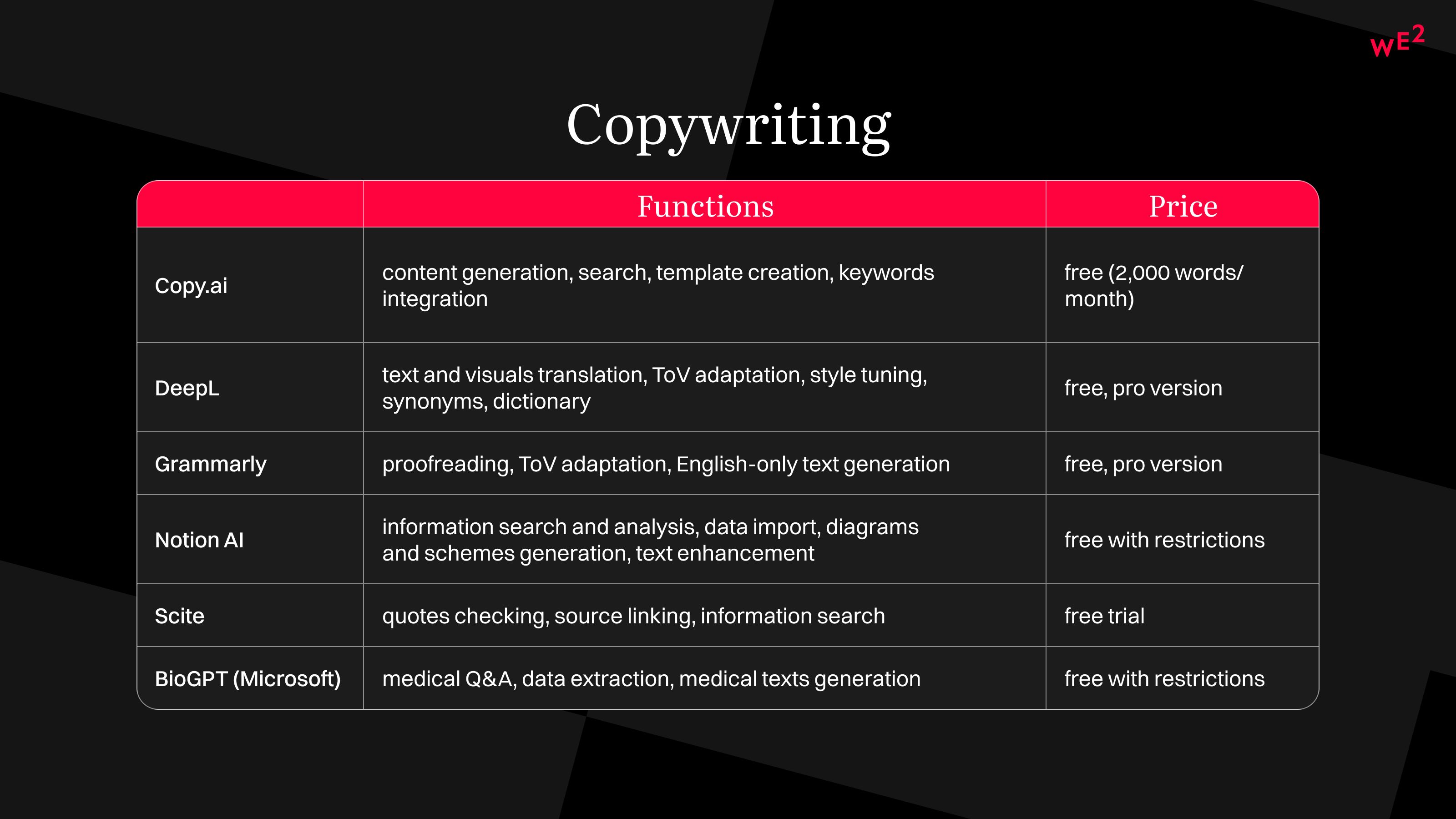
Creative Content Generation
In pharmaceutical communications, creatives should not only be eye-catching but also easy to understand. To help doctors engage with complex medical information, it’s important to use visuals that highlight key insights and clearly structure the content.
AI significantly simplifies this process. It can generate infographics, diagrams, and presentations—turning raw data into clear, visual assets. However, it’s essential to remember: AI is a tool, not a designer. In some cases, manual refinement is necessary—especially when scientific accuracy is at stake.
Tools:
- Infographics and Data Visualization
These platforms help turn complex medical information into easy-to-understand charts and diagrams. Visme AI is particularly effective for visualizing research, reports, and educational materials.
- Landing Pages and Presentation Design
AI tools allow for the rapid generation of visual materials that can be used as creative references. Durable AI builds landing pages from a simple brief in just a couple of minutes. Gamma AI makes presentations with a clear structure and professional style.
- Images and Creative Generation
AI helps brands create unique illustrations. While there are no pharma-specific generators yet, most platforms can be briefed for medical content—the key lies in crafting the right prompt. Midjourney, for example, can generate high-quality pharma-related images.
- Creative Ideas Generation
ChatGPT (in brainstorming mode) is suitable for creating design concepts and promotional campaigns.
Case Study
Our team redesigned email and WhatsApp templates about biological therapy for inflammatory bowel disease (IBD). To make the materials more visually clear and easy to understand, we:
- Restructured the text and divided it into logical blocks
- Visualized key data as infographics
- Generated new illustrations in a fresh style using Midjourney
AI accelerated our production process and made communications more appealing and up-to-date—without compromising scientific accuracy.
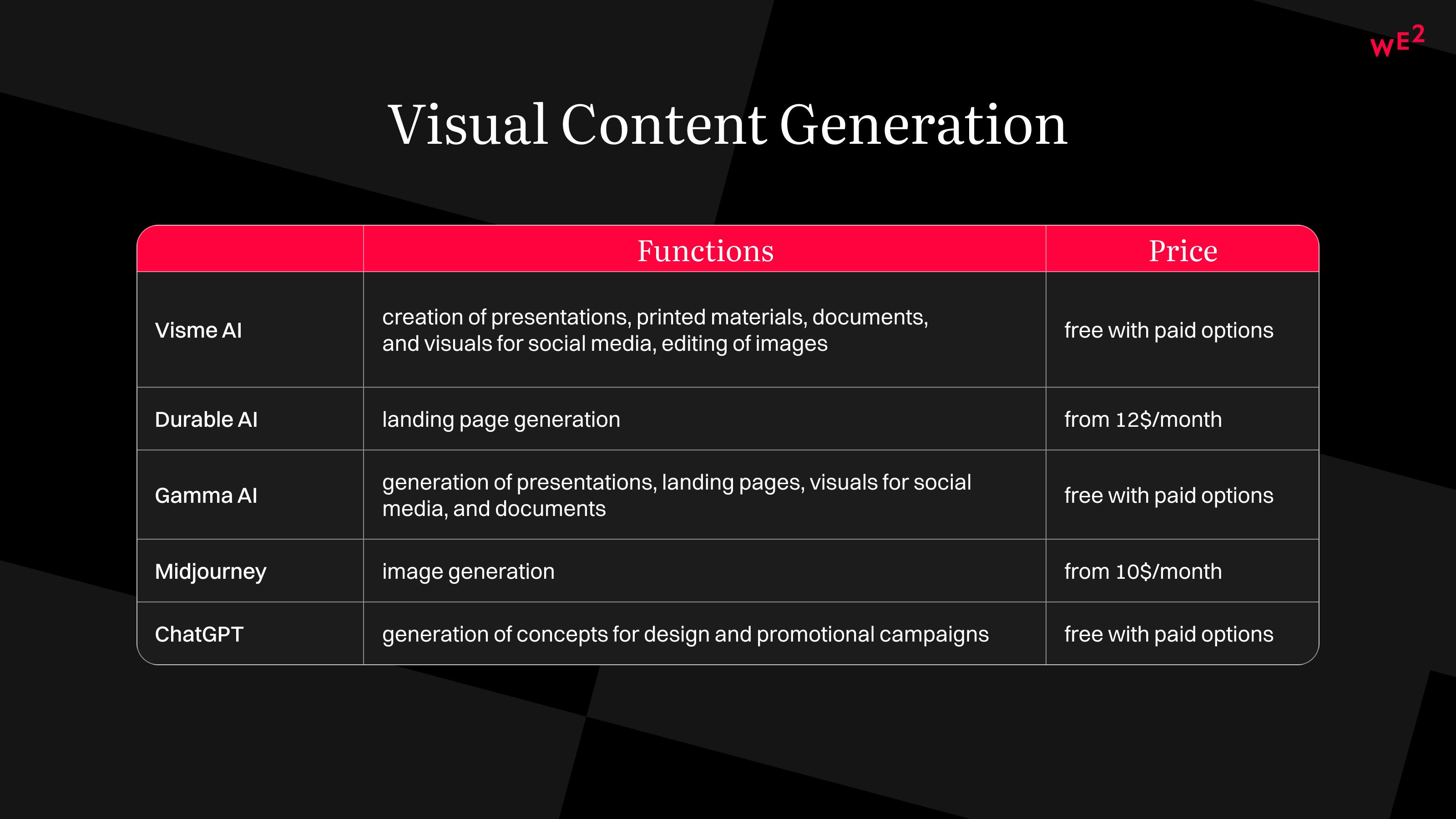
Analytics and Predictions
Effective pharmaceutical marketing requires deep data analysis. It’s essential not only to assess campaign results but also to predict outcomes before launch.
AI enables automated data processing, uncovers hidden patterns, and forecasts which strategies are most likely to succeed. This helps optimize budgets, boost audience engagement, and improve targeting precision.
Tools:
- Current Campaign Data Analysis
AI quickly processes large volumes of information, highlighting key performance metrics. Google Analytics 4 tracks the effectiveness of newsletters, clicks, and conversions in real time.
- Predictive Analytics
Future results are based on historical data. For example, Pecan AI identifies which campaigns are most likely to deliver strong performance.
- Text and Feedback Analysis
AI assesses textual data, such as reviews and comments. MonkeyLearn processes responses to newsletters, detecting sentiment (positive, neutral, or negative).
- Probability Scoring for Webinar Registrations or Downloads
AI tools evaluate which users are most likely to take action. HubSpot Predictive Lead Scoring assesses how likely a physician is to register for a webinar or download an app.
- Data and Report Visualization
AI automates the creation of dashboards and visual insights. The interactive platform Tableau builds overviews featuring key campaign metrics.
Case Study
The PwC team applied AI and ML to analyze 6,000 physician interaction scenarios. As a result, they identified optimal next steps, which led to a 30% sales increase and improved field force efficiency by 1.5 times. The case demonstrates the potential of AI to forecast and optimize pharmaceutical marketing strategies.
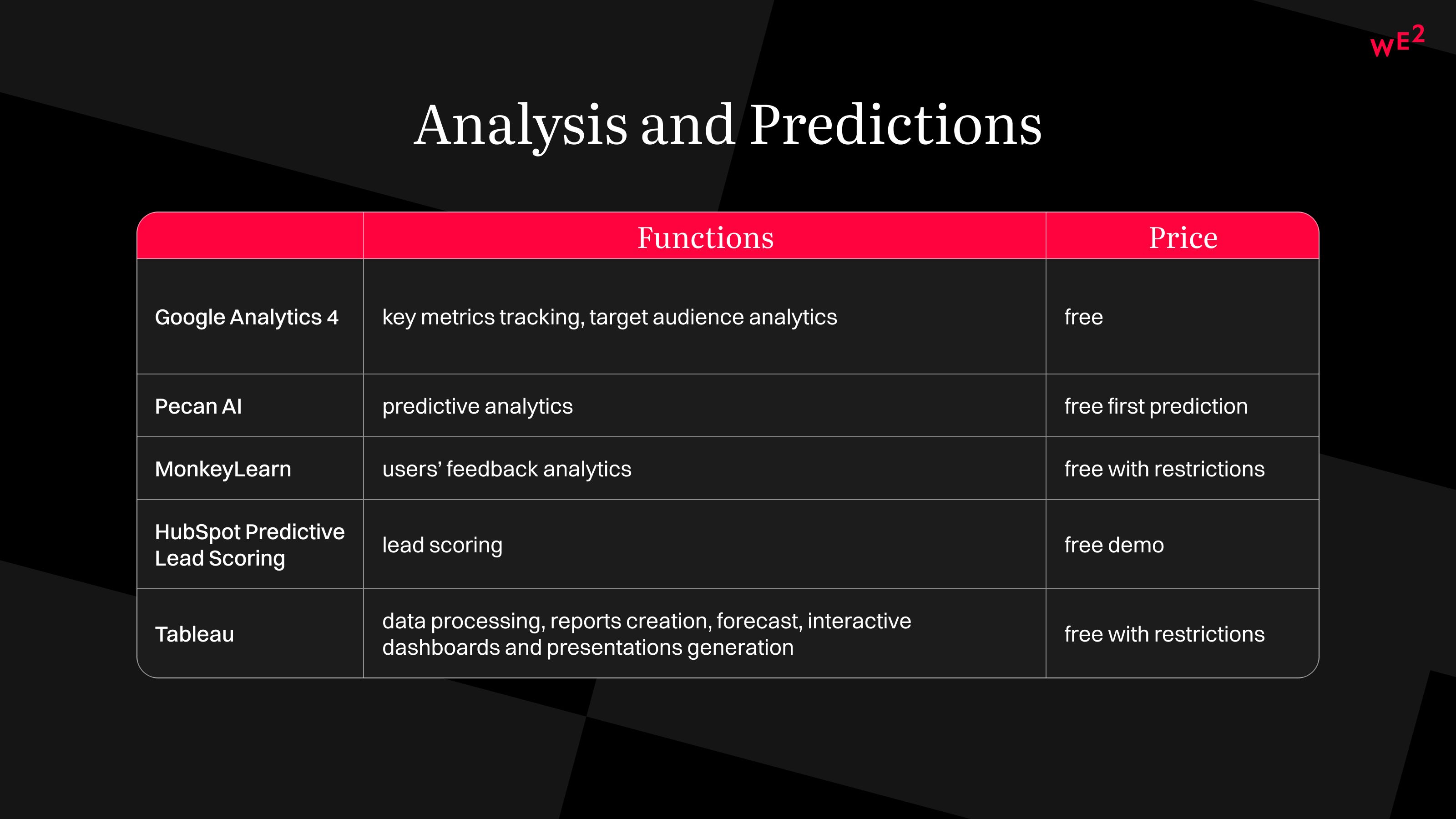
Hyper-Personalization
In recent years, experts have noted a strong trend toward hyper-personalized communication. Each message should reflect the recipient’s interests, specialization, and behavior, driving deeper engagement. Simple content personalization is no longer enough.
With massive amounts of data to manage, AI has become indispensable. It enables automatic behavioral analysis, dynamic segmentation, and highly relevant content delivery.
Tools:
- Behavior Segmentation
AI tools analyze how physicians interact with content and automatically assign them to audience groups. HubSpot segments users based on their activity—whether they read newsletters, click on links, or ignore emails altogether.
- Interests and Content Segmentation
Platforms identify which topics attract each recipient. Adobe Sensei AI detects doctors’ preferences based on their interaction with content. Pecan AI forms personalized groups by analyzing user interests.
- Dynamic Segmentation in Real Time
AI-powered platforms continuously update audience segments in real time, adjusting them based on behavior. Mailchimp, enhanced with AI, automatically moves users between groups depending on their responses to email campaigns.
- Chatbots and Personalized Interaction
Virtual assistants help tailor communication to the interests and specialization of each doctor. Drift personalizes conversations by offering relevant content based on previous interactions.
Case Study
One of ZS’s clients—the leading pharmaceutical brand—integrated an AI-driven system for sending hyper-personalized emails. The platform adapted content dynamically based on physician behavior and specialization—resulting in a 40% increase in engagement and a 2.8× boost in click-through rates (CTR).
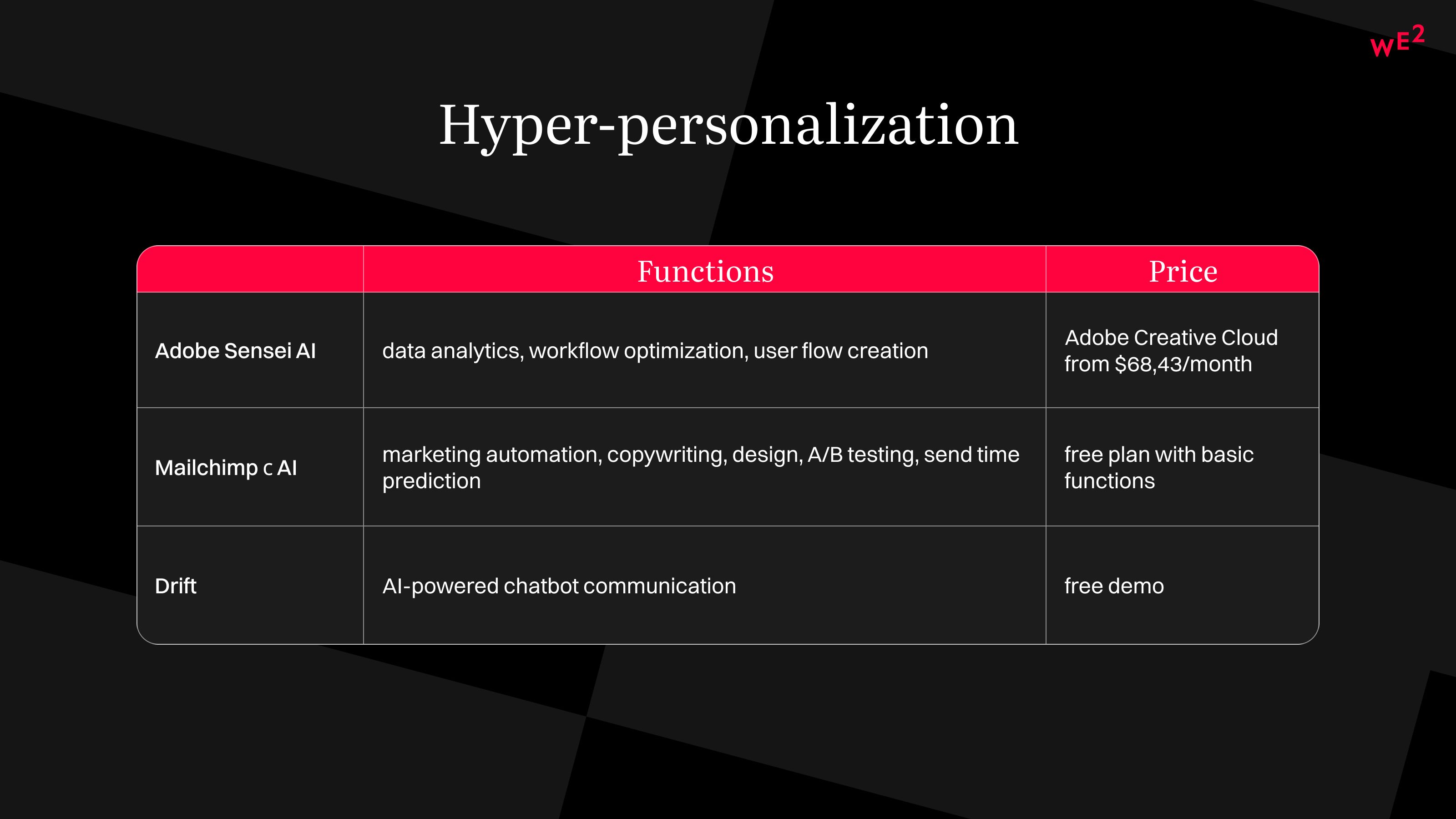
Video Production
Video content becomes an integral part of pharmaceutical marketing. The trend spans both short and long formats, integrated into educational platforms, email campaigns, social media, and other communication channels.
However, video production often demands significant time and resources—especially when it comes to edits. AI helps streamline the process, from scriptwriting to final editing, saving time and simplifying the overall workflow.
Tools:
- Scenario Generation
AI tools help quickly generate scripts based on a simple idea or text description. Pictory.ai creates a scenario and automatically selects matching visuals.
- Video Voice Acting
AI adapts voiceover tone and intonation to match the communication goal. For example, ElevenLabs lets you choose the emotional tone.
- Full-cycle Video Production
AI-powered tools can handle the full video production cycle—from animation and editing to voiceover and final rendering. They accelerate the process of video creation, minimize manual labor, and simplify editing. Runway, for instance, generates and edits videos, animates objects, and adds visual effects. The platform is suitable for educational and promotional videos, presentations, and clinical case studies.
- Storyboard Creation
Storyboard That creates scene planners based on a scenario. Boords automatically generates professional story layouts. Runway (Storyboard Mode) visualizes key scenes directly from the text.
- Audio Transcription and Subtitle Generation
Descript extracts text from videos and allows editing via transcript. Automatic transcription and subtitle generation speed up production and improve content accessibility.
- Montage
AI can quickly and easily edit videos, apply visual effects, and finalize the project. Runway is ideal for automated editing, scene cutting, and adding special effects.
Case Study
Novartis actively integrates AI across multiple workflows, including data visualization. The team carried out a large-scale project to digitize pathology images, as a result, significantly improving the speed and accuracy of visual information analysis and processing.
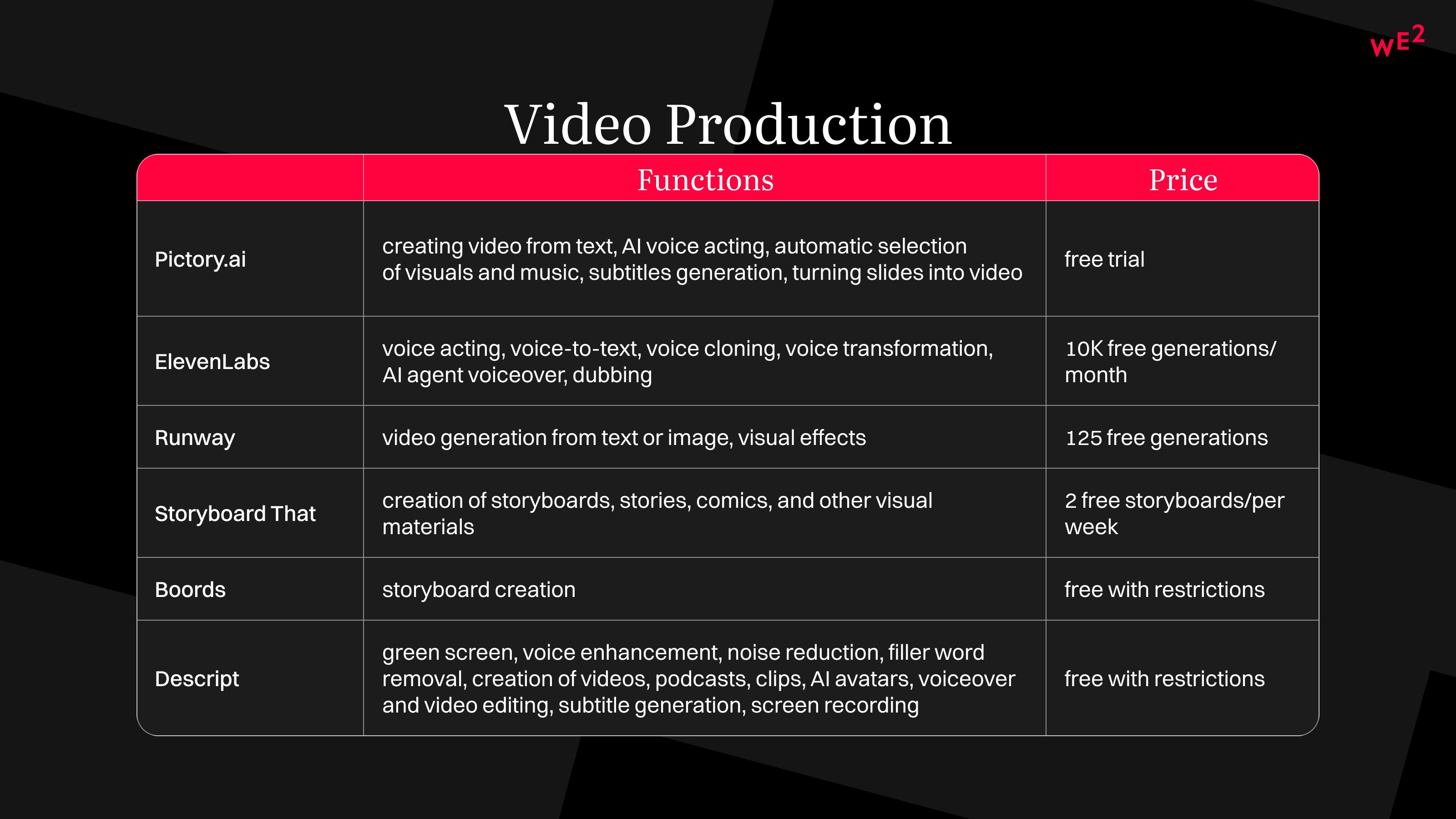
Conclusion
Step by step, AI is becoming a useful assistant in pharmaceutical marketing: it simplifies analytics, builds communications with better precision, and saves time in content creation. In this guide, we gathered AI tools that have proven effective in real-world tasks. You don’t have to apply them all together—start with the solutions that directly address your current needs and seamlessly fit into your workflow.

READY TO START?
Fill out the form, and we’ll reach out shortly to discuss your project.
